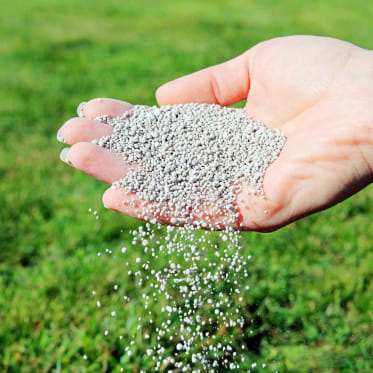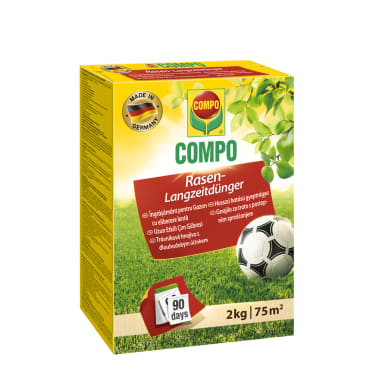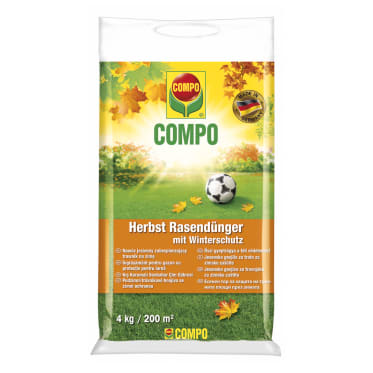Frequent search terms

- COMPO
- Guide
- Plant Care
- Lawns
- Planning and care
- Lawn care over the course of the year
The right care in the spring, summer, autumn and winter
Lawn care over the course of the year
A healthy, thick lawn forms the foundation for a beautiful garden. But it needs to cope with quite a lot over the course of the year: Children playing, dogs frolicking, social events and the weather can cause your green carpet significant stress. The lawn should be cared for according to the season so that it can withstand the stresses of garden life. Here is an overview of the most important activities.
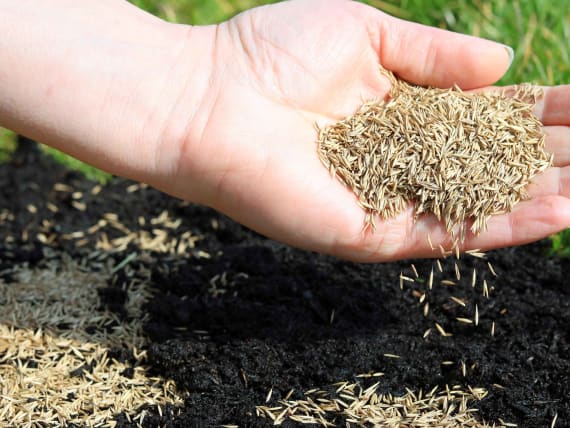
Lawn care in the spring
In the spring the lawn is covered with residual leaves, cones or branches that need to be removed. It is best to start by removing moss to prevent it from spreading further. Pesky lawn thatch can be easily removed through scarification. If the lawn is no longer as thick and has light spots, it should be re-sown. Give your new lawn the best start by seeding between April and the end of May. It is important that the ground temperature is at least 5-10 °C. From April onwards, the lawn is in its growth period and needs a lot of air, water and nutrients in the form of fertiliser. We offer various fertilisers with varying residual action times. The nutrients are always distributed on the lawn as required depending on the heat and water. It consistently provides the plants with the amount of nitrogen that the roots can absorb. This way, the grass is not over-fertilised and there is no risk of excess nutrient salts getting into the ground water. Alternatively, you can use a completely organic lawn fertiliser for a deep green, thick and durable lawn.
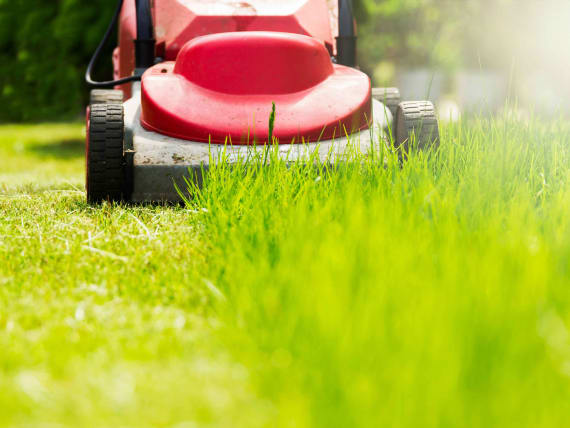
Lawn care in the summer
The lawn becomes heavily worn in the summer months in particular. Direct sunlight, dryness and heavy use wear out the lawn and leave their mark. This means that regular mowing, watering and fertilising is a must. A length of 4-5 cm is ideal for lawns subject to normal use. The following goes for watering: Depending on how often it rains and the temperature, the green carpet depends on thorough watering two to three times a week. The best time to do this is early in the morning or in the evening. To water the lawn, you should use ten litres per square metre so that the water can penetrate deep enough, particularly in dry periods. Please don't forget to fertilise! This increases the lawn's resistance to dryness. Weeds should also be regularly removed during the season to prevent them from spreading further. Scattered weeds can be removed relatively easily. In the case of heavy infestation, you should use a lawn fertiliser with a weed killer.
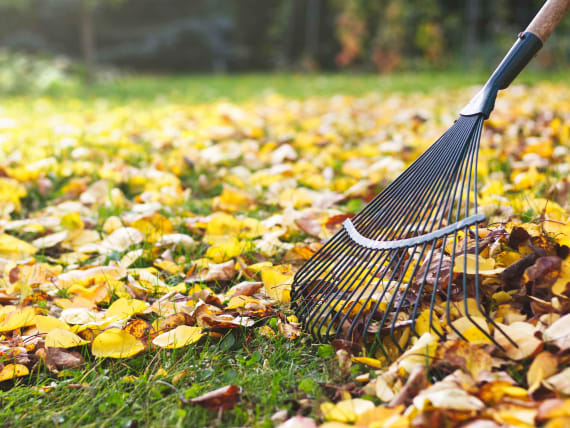
Lawn care in the autumn
If your lawn has suffered a lot due to high temperatures and severe dryness, now is the right time to repair and rejuvenate it. The lawn stops its metabolic activities when temperatures drop below 10 °C. In that case, it is time to prune it back to an optimal overwintering length of about five centimetres – this growth height prevents lawn diseases. In the autumn, a special and purposeful nutrient supply is also important for improving the durability of the grass and optimally preparing it for the upcoming winter. During this season, the lawn requires less nitrogen than in the summer but plenty of potassium. Our slow-release lawn fertiliser is also perfect for soils rich in phosphate and can be applied until the end of October/beginning of November. What's more, get rid of wet leaves and small twigs to ensure that the lawn gets enough air and rot doesn't set in! It is best to put the leaves between shrubs and below hedges as ground cover.

Lawn care in the winter
The lawn has to deal with a lot in the winter: full snow coverage, frozen grass being trodden on, dry frost periods or sustained waterlogging. These conditions foster diseases such as snow mould and cause gaps in the lawn and a pale colour. Beware: After the first frost, the lawn should not be trodden on because this can break the delicate blades.
Find even more information about your lawn here.
Suitable products for lawn care


